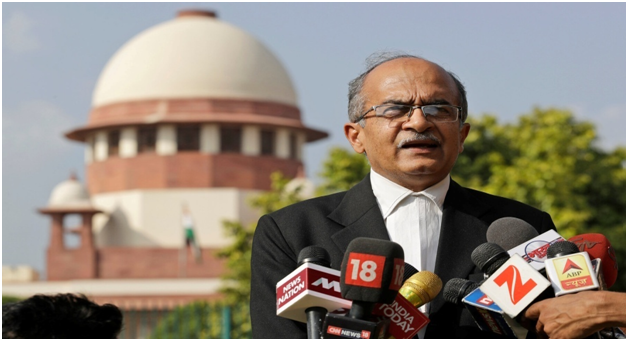Important Literary Creators of MP and their Creations/ Literature - मप्र के प्रमुख साहित्यकार एवं उनकी रचनाएँ/साहित्य
Importance of folk poets–
Folk poets play a crucial role in Madhya Pradesh, preserving and promoting the cultural heritage of the region.
Their oral traditions and poetic expressions serve as a bridge between the past and the present, conveying the values, beliefs, and stories of the local communities.
Through their artistry, folk poets keep alive the rich folklore, myths, and legends specific to Madhya Pradesh, ensuring that future generations remain connected to their roots.
These poets serve as the voice of the people, addressing social, political, and environmental issues, and acting as catalysts for change.Their contributions are invaluable in fostering a sense of identity, pride, and unity among the people of Madhya Pradesh.
1) Ancient Literature – Kalidas ,Bhrathari ,Bhavbhuti , Ban Bhatt ,
2) Medieval Literature - Acharya Keshav chandra or Kavi Keshavdas ,Padmakar , BHUSHAN ,
3) Modern Literature - Makhan lalchaturvedi ,Subhadra Kumari Chauhan , Gajanan Madhav " Muktibodh" , Balkrishna Sharma "Naveen" ,Bhavani Prasad Mishra ;HarishankarPrasai, Sharad Joshi , Mulla Ramuji ,Shivmangal Singh "Suman" ,Nand DulareVajpai
4) Folk Literature/ Dialects of M.P. :Isuari , Singa Ji
1- Ancient Literature-
Kalidas
Kalidas the "Shakespeare of India" is an epoch writer , a master innovator, generally regarded as top-notch literary figure India has ever produced . Born at Mandsourin M.P.
His important literacy works are :
i) Abhigyan – Shakuntalam(Love story of Dushyant and Shakuntala)
ii ) Malvika - Agnimitram (Love story between Malvika and Agni mitram)
iii) Vikramovarsi (Urvashi conquered by Vikrama by his valour)
iv) RituSamhar(Description about Seasons)
v) Raghuvansham (Description about Lineage of Ram Chandra jee)
vi) Kumar Sambhava
vii) Meghdutam.
Bhrathari
He was the king of Ujjain . His era was 4th c AD- 5th c AD.
He was the ruler of Ujjain, before renouncing the world and abdicating in the favor of his younger brother Vikramaditya.
Stories of Bharthari are Nath panth sung by yogis, abound in the Indian folklore
Stories of Bharthari and his brother Vikramaditya are from the tales of Baital Pachisi
His writings are as follows :
i) Nitisatak ii) Shringarsatak iii) Vairagya satak
Bhavbhuti
His Real name was "Shri Kanth". He belong to 7 C. A.D. He is believed to have been the court poet of king Yashovarman of Kannauj .
He is known as Milton of ancient India .
"Poet of Karun Rasa" for his work named as Uttararamacarita.
His writings are as follows:
i) Mahaveercharit - depicting the early life of Rama
ii) Malti-Madhav - a play based on the romance of Malati and Madhava
iii) Uttararamacarita (The story of Rama's later life), depicts Rama's coronation, the abandonment of Sita, and their reunion
Ban Bhatt
Banbhatt is an important literary figure of Sanskrit literature. His era was 7th century AD .
His writings are as follows:
a) Harshcharit
b) Kadambari - is a romantic novel in Sanskrit . Its central thread is that of a romantic attachment (and eventual union) between the hero Chandrapeeda and the heroine Kadambari.
Bana did not survive to see it through completion.
The novel was completed by Banabhatta's son Bhushanabhatta,
c) MukutTagadik-Battle between Duryodhan and Bheem.
2) Medieval Literature-
Jagnik
Jagnik Nayak was a poet born in the Jijhotiya Nayak family, a contemporary of Chandela king Parmardidev (Parmal 1165-1203 AD) of Mahoba.
Jagnik Considerd himself as Parmal's feudatory and assistant Mahoba's Alha-Udal as his hero .
He composed a book named Alhakhand which got famous among the people by the name 'Alha'.
It was so accepted by the public and so popularized in North India. But even after this the original poetry probably got lost.
In 1865 AD, Farrukhabad Collector Sir Charles Elliot got it collected under the name 'Alh Khand' in which Jihuti Hindavi language is predominant.
Alha Khand is the treasure of the people's group. From the time of its creation till today, it has breathed the mantra of courage and sacrifice in the hearts of Indians.
Acharya Keshav chandra or Kavi Keshavdas
He belong to 16 & 17th Century at Orcha. Orcha king…Indrajeet Singh considered him to be his Guru .
His literary works are as follows –
Ratan Bavani - It depicts Vishnu as a supporter of Ratnasena Bundela,
i) Rasik-Priya -He praised the Betwa and Orchha as the most beautiful things on earth and it was he who made them famous
ii)Ramchandrika-
iii)Kavi Priya-
iv)VeersinghdevCharitv-
v) Vigyan Geeta
Padmakar-
KaviPadmakar was great poet of Hindi literature . He belongs to 18 century in Sagar . He was away from erotism .
His writings are:
1-Himmat Bahadur Virudaval- In poetic praise of Gusain Anup Giri (Himmat Bahadur) of Ajaygarh,
2-Padmbharan-
3.Jagvinod - for Sawai Jagat Singh
4.Prabodh Pachasa
5. Pratapsingh Virudavali- in honor of Jaipur King Pratap Singh.
6-Alija Prakash (अलीजाह प्रकाश)-in honor of Gwalior ruler Daulatrao Scindia,
7.'Ishwar-Pachisi' in praise of Jaipur king Ishwari Singh.
Bhushan
Bhushan was great literary figure of the age of mannerism in 17c - 18 c. He was basically from Kanpur.
Kavi Bhushan was in the courts of the Bundeli king Chhatrasal and the Maratha king Shivaji Maharaj.
He mainly wrote in Brajbhasha interspersed with words from Sanskrit, Arabic and Persian languages.
Bhushan belonged to Riti era but he wrote poetry in वीर रस (heroic spirit.)
He was a scholar poet of Anupras Alankar & Shlesh Alankar.
His works-
-i) Chhatrasal Dashak
ii) Shivraj Bhushan & Shiv Bavani
iii)Saaransh ki khani-
Bihari Lal
Bihari Lal was an important poet of the Riti period of Hindi literature. Great poet Biharilal was born in Gwalior around 1595.
His childhood was spent in Bundelkhand and youth was spent in his in-laws' house in Mathura
The description of Biharilal's separation is full of exaggeration. This is the reason that there is no naturalness
Bihari Lal's only composition is 'Bihari Satsai'. - It contains Dohas, or couplets, on Bhakti (devotion), Neeti (Moral policies) and Shringara (love).
This is a form of ‘Muktak’ poetry(short poem of four lines. ).
Ghagh
was a 17th-century poet, philosopher and Brahmin astrologer from Northern India.
He is known for writing poetry and proverbs on farmers and agriculture.
His proverbs are popular among folks in the Hindi-speaking regions like Haryana, Rajasthan, Uttar Pradesh and Madhya Pradesh to the eastern boundaries of Bihar.
Ghagh was born in the village called Chaudhary Sarai near Kannauj, which is located in central Uttar Pradesh, during Mughal emperor Akbar's reign in the 16th century.
He had received a honorary title, Chowdhary by Akbar. Ghagh's father was a Brahmin scholar and astrologer.
There is no extant book published under the authorship of Ghagh himself but there are many that compile Ghagh's poetry and proverbs.Such as
-Ghagh ki kahavatein (Sayings of Ghagh) and
-Ghagh ki kavitayen (Poetry of Ghagh).
-Ghagh aur Bhaddari ki lokoktiya.
3) Modern Literature-
Makhan lal chaturvedi
He is known as "Indian soul" .
He was poet, writer, essayist, playwright and a journalist .
He participation in India's national struggle for independence .
He contribution to Chhayavaad,( Neo-romanticism )movement of Hindi literature.
He was born at Babaivillage in Hoshangabad district in 19 Century .
He was awarded the first Sahitya Akademi Award in Hindi for his work Him Tarangini in 1955.
The Government of India awarded him the civilian honour of the Padma Bhushan in 1963.
For his works reinforcing Indian nationalism during the British Raj, he is referred to as the Yug Charan
Hisnews paper was ….Karamveer .
His writings are as follows :
a) Kavya (Verses) :
Himtarangini,
Himkiritini,
Mata( माता,)
Maran-Jwar(मरण-ज्वार )
b) Essays :
Amir-irrade- Garib-irrade
Sahitya-devta.
c) Plays
KrishnarjunYudha ,
d) Memories :
Samay ke paav
e) Collection of speeches :
Aatma diksha
Subhadra Kumari Chauhan
Subhadra Kumari Chauhan (16 August 1904 – 15 February 1948) was an Indian poet famous for Hindi poems composed primarily in Veer Ras, one of the nine Ras' of Hindi poetry
-In 1921, Subhadra Kumari Chauhan and her husband joined Mahatma Gandhi's Non-Cooperation Movement. She was the first woman Satyagrahi to court arrest in Nagpur and was jailed twice for her involvement in protests against the British rule in 1923 and 1942
Her literary assets are :
a) Veeron ka kaisa ho vasant,
b) Jaliawala Bagh mein vasant,
c) Jhansi ki rani.
Her "Jhansi ki raani" became a patriotic poem for nationalist & her words played the role of catalyst in increasing the spirit of nationalism.
"ChamakuthisanSattavanmeinvehtalwarpuranithi
Bundeleharbolonkemoohhamne suni kahanithi
Khubladimardanivo to Jhansi waliraanithi "
Khadi Boli-
She used khadi boli in her literature which had a flavor of Veer Ras (Bravery). This unique combination gives her the status of peacock among birds , a status of empress among the rulers.
She wrote following two collection of verses-
a)Tridhaar.
b) Mukul.
She wrote following three collection of stories
a) Bikhare moti
b) Seedhe sade chitra
c) Unmadni.
Legacy-
The ICGS Subhadra Kumari Chauhan, an Indian Coast Guard ship, was named for the poet.
The government of Madhya Pradesh placed a statue of Subhadra Kumari Chauhan before the Municipal Corporation office of Jabalpur.
On 6 August 1976, India Posts released a postage stamp to commemorate her.
Gajanan Madhav " Muktibodh"
Shri Muktibodh was not only a famous literary figure but he was a famous journalist, story writer& commentator. He was born at Distt. Gwalior in 1917.
He was a leading figure in the Prayogvaad Experimentalism movement(The way to truth is through experiments ) of Hindi literature and of the Nayi Kahani and Nayi Kavita Modernism of the 1950s.
He is also considered a central figure in the rise of 'New Criticism' in Indian literature.
His works are as follows :-
i) Nai kavita ka aatm Sangharsh ii) Naye Nibandh iii) Kamayani - ek punravichar
iv) Bhuri –Bhuri khak-dhul - A desperate urge to change today's oppressive society v) Ek sahityak ki dairy vi) Vipatra
vii) BrahmRakshas - Is considered Muktibodh's most influential work in experimental poems, viii) Andhere me
ix) Bharat –Itihas va sanskriti
x) Chand ka muh tedha hai
In his memory, Madhya Pradesh Sahitya Parishad, has instituted the annual MuktiBodh Puraskar.
Balkrishna Sharma "Naveen"
He was born at Shajapur in M.P. in 1897. He got his formal education at Shajapur in Ujjain & at Kanpur.
was an Indian freedom activist, journalist, politician and a poet of Hindi literature.
He was a member of the 1st Lok Sabha, representing Kanpur constituencyand served the Rajya Sabha as a member from 1957 till his death.
He succeeded Ganesh Shankar Vidyarthi as the editor of Pratap daily
His major writings :
i)Mahakavya (Epic) :
-Urmila,
ii) Narrative poem :
Pranarpan(On sacrifice of Ganesh Shankar Vidyarthi )
iii) Collection of poems
- Kumkum ( He motivated the common folks to sacrifice there life for cause of the nation) ,
-Rashmi rekha – (called for revolution) ,
-Apalak- called for revolution ,
-Hum vishpai janm ke .- हम विषपायी जनम के
The Government of India awarded him the third highest civilian honour of the Padma Bhushan, in 1960, for his contributions to literature.
India Post issued a commemorative stamp on Sharma in 1989.
Bhavani Prasad Mishra
He is known as an experimental poet for his experimental style, nationalist styles & Gandhian style. He was born in distt. Hoshangabad of M.P.
A Gandhian in thought and deeds, Mishr was deeply disturbed by the so-called effects of colonization in the country.
He used to say it a kind of poisoned sweet in the garb of present English education system of India .
His major works are :
i) Geet-farosh
ii) Chakit hai Dukh - चकित है दुख
iii) Kamal ke phool
iv) Vaani ke deenata-
v) Tootne ka sukh
vi) Satpudake jungle
vii) Khushboo
viii) Rassi
ix) Sannatta
सतपुड़ा के घने जंगल।
नींद मे डूबे हुए से
ऊँघते अनमने जंगल।
झाड ऊँचे और नीचे,
चुप खड़े हैं आँख मीचे,
घास चुप है, कास चुप है
मूक शाल, पलाश चुप है।
बन सके तो धँसो इनमें,
धँस न पाती हवा जिनमें,
सतपुड़ा के घने जंगल
ऊँघते अनमने जंगल।
Sannatta-
मैं सन्नाटा हूँ, फिर भी बोल रहा हूँ,
मैं शांत बहुत हूँ, फिर भी डोल रहा हूँ;
यह ‘सर्-सर्’ यह ‘खड़-खड़’ सब मेरी है,
है यह रहस्य मैं इसको खोल रहा हूँ।
HarishankarPrasai (Satirist)
He was born in 1924 in Itarsi . His initial life was full of struggle &conflicts . He completed his P.G. in M.A. (Hindi) from Nagpur University .
His famous compositions are as follows :
- Magazine
- Novel –
Rani Nagfan ki kahani , Tat ki khoj(rV dh [kkst
ii) Essay –
a) Bhoot -ke pav pichhe
b) Baiman ki parat(बेईमानीकीपरत)
c) Pag dandiyo ka jamana
d) Sadachar ki Tabiz
e) Shikayat mujhe bhi hai
f) Vaishnav ki phislan
g) Tirchhi Rekhaye
h) Thithuratahuagantantra(ठिठुरता हुआ गणतंत्र)
i) Viklangshruddha ka daur
Sharad Joshi
Sharad Joshi is regarded as a topmost Hindi satirist. He was born in 1931 at Ujjain education he started writing column in news paper for sometime .
He was awarded the Padma Shri
His famous compositions are :
Satirical Essays (O;axkRedfuca/k)
a) Parikrama
b) Jeep par sawarilliya
c) Raah kinare baith
d) Yatha sambhav
e) Phir kisi bahane
Drama –
a) Andho ka hathi
b) Ek thaGadha
Novels :
a) Main
b) Main aur keval main ,
Collection of stories –
Tilism
Filmography as dialogue writer-
- Chhoti Si Baat (1975)
- Shyam Tere Kitne Naam (1977)
- Saanch Ko Aanch Nahin (1979)
- Godhuli (1977)
- Chorni (1982)
Mulla Ramuji
Mulla Ramuji was top Urdu literary figure & Urdu poet, without him the Urdu literature is incomplete as the Sanskrit literature is without kalidas. His real name was …Mohd. Siddiqui. He was born in 1896 at Bhopal.
Gulabi Urdu
Mullah Ramuzi is known in our literature as the inventor of Gulabi Urdu. Gulabi Urdu in its own words means to change the order of the words in the sentence.
His 21 Urdu composition are found , famous are as follows :
i) Intkhab - e - gulabiurdu
ii) Shaadi
iii) Auratjat
iv) lathi aur Bhains
v) DiwanemullaRamoji
vi) Shifakhana
vii) KhatuteRamuji
viii) Jung
ix) Gulabishayari
x) Gulabiurdu
The name of his eight books are available but these books are not available like –
Musafirkhana, JananeMashraki.
To make his memories immortal, the name of ……M.P. cultural bhawan has been named as Mulla Ramuji Bhavan.
Main Dialects (language of communication ) of MP
Main language of communication in MP is Hindi.
Also Hindi is official language of M.P.
Some of other languages [ Exactly Dialects/Bolis]very close to Hindi being spoken in M.P. are:-
- Malwi:-
It is spoken in Malwa region i.e. spoken in Ujjain, Indore, Dewas, Shajapur, Sehore, Ratlam, Mandsaur, Neemuch, Rajgarh and Sondhwadi. - Neemadi
It is spoken in Nimar[south of malwa that is adjacent to Maharashtraa]. It is widely spoken in districts of Barwani, Khandwa, Barwaha, Khargone, Burhanpur, Bedia, Sanawad, Dhar, Hadra and Southern Dewas. - Bundeli
It is spoken in Bundelkhand region of Madhya Pradesh . Bundeli is closely related to Braj Bhasha. - Bagheli
It is spoken in northeastern region MP. This particular area of Madhya Pradesh is known is Baghelkhand , according to which, the dialect is given its name.
Other languages include Telugu, Bhilodi (Bhili), Gondi, Korku, Kalto (Nahali), and Nihali (Nahali), all spoken by tribal groups.
Shivmangal Singh "Suman"
He was great Hindi poet. He was born in 1915 in Unnavdistrict of U.P.. He received Doctor of letters from Banaras University in 1950.Suman worked as the Vice Chancellor of Vikram University (Ujjain) during 1968-78 .
His major compositions are :
i) Hillol
ii) Jevan ke gaan,
iii) Yug ka mol
iv) Vishwas badata hi gaya,
v) Pralay Shrajan
vi) Vindhaya Himalaya
vii) Mahadevi ki kavya sadhna,
viii) Geeti kavya
ix) Mitti ki barat
x) Vani ki vyatha
xi) Udyam aur vikas
xii) Prakratipurush - kalidas.
Among above compositions ,the “Mitti ki Barat ” is an invaluable contribution to modern Hindi.
Nand DulareVajpai
He was born in 1906 in Unnavdistt. of U.P. He is considered as great critic&writer .
He edited following Magazines :
i) Bharat (1930-35)
ii) Sur Sagar (1933-36)
iii) Ramcharitmanas (1937-39) .
He was the HOD of Hindi department in 1941 to 1947 in B.H.U after that he become the Vice Chancellor of Vikram university works are as follows –
i) Hindi Sahitya
ii) Bisvi Shatabdi
iii) AdhunikShahitya
iv) Naya sahitya naya prashna
v) Kavi Prasad
vi) Kavi Nirala
vii) Mahakavi Tulsidas
viii) Premchand ek shahitya "vivechan"
ix) Rashtra Bhasa ki kuch "Samsyayein "
x) Rashtriya Shahitya tatha Anya nibandh
xi) Riti aur shelly
xii) Hindi shahitya ka sankshiypta Itihass.
He died in 1967.
4) Folk Literature/ Dialects of M.P.
M.P. is situated at the heart of the country . In M.P some dialects originated in M.P. as well dialects of neighboring states are spoken hence M.P. is known as spectrum of dialects.
In M.P. following dialects are spoken -
i) Malwi
ii) Bundeli
iii) Bagheli
iv) Nimadi
v) Bheli
vi) Gondi
vii)Braj Bhasha
Isuri
Isuri was a great poet of Bundelkhand. He was born atMandki village of Mahuranipur in Jhansi in 1840 A.D.
In childhood his parents died so he was bought up by his maternal uncle. After marriage he worked in Dhori village ofNavgaon.
Isuri also explained about the devotion of… Ram and Krishna. Which is as follows :
" Rasna Ram Kehjari ,kuan jathai hari.
Jo Harnams anjeevniboti , khat bane to khari."
It means the name of Ram and Krishna is like Sanjeevni medicine which we should pronounce repeatedly. In his writing there is devotion for Radha and Krishna which is as follows :
"Radha albeli ko aanan , take nandkekanan.
Rakhe rahat chakor chitra me, jayon chanda ke manan."
It means Krishna remember Radha in the same way as Chakor bird misses the moon at night.
Isuripreaches about unreality of life as follows:
"Tan ko kaun bharoso karne, Aakhir ek din marne.
Jo sansar aus ko bunda ,pavan lage so durne.”
It means human body is like a drop of dew which is momentary.
Isuri also wrote on the economic side of human life. He says about the…. agriculture and weather of that time as.
"Aaso de gao salkarota, Karo khawab sab khota.
Gauo de gaoloka ,Kaknaderisabdharkhaye."
It means this year has also gone and it gave tears in the eyes of farmers . wheat is struck with a disease named giruaa.
Isuri by his writing on soul and super soul, Radha-krishna, weather and agriculture became a great folk poet and poet of the people. He told the people to walk on the spiritual way, by this every one can attain the God. That is why his name is always written in golden words among folk poets.
Singa Ji
He was born at Khajurivillage of distt. Barwani of Neemadh region in 1519. He was…Gawali (milkman) by caste.
Singaji served the landlord for twelve years and won many battles for the landlord with his spiritual magical powers.
According to some sources, he also worked as a letter carrier for the king of Bhamagarh.
But later, he took retirement and became an ascetic. He took Samadhi at the age of 40
Sant Singaji Reservoir is also a part of the Narmada Sagar Project developed on the Narmada River by the Narmada Hydropower Development Corporation.
Singaji Fair, Piplia. District Khandwa,
His writings are divided as follows :
1)Sakhi
2) Bhajan
3) Dridh Upadesh - सिंगाजी का दृढ़ उपदेश (Didactic teaching
4) AatmDhyan
5) Dosh-bodh
Like Kabirdas, he also kept opposing religious rituals and hypocrisy and the aim of his posts was to create a new society by uniting all the castes.
That is why Sant Singaji is called Kabir of Nimar. In his verses and songs, Sant Singaji has laid great emphasis on
-Uplifting the Dalit and neglected section of the society.
-To save the Animals.
-To rejuvenate the society
-Spirtual upliftment of society.




.jpg)
.jpg)
.jpg)
.jpg)
.jpg)
 (1).png)




